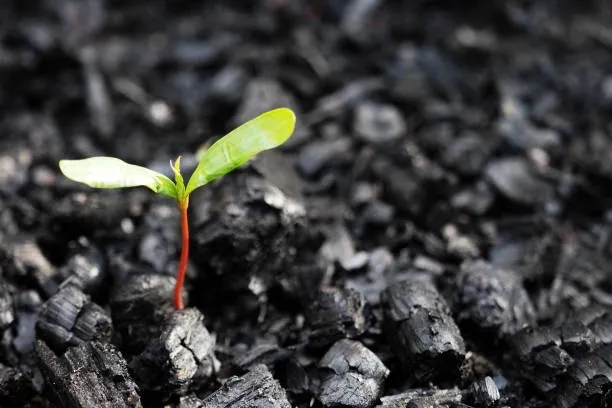Published on 4 February 2022
Posted in OthersWood materials
Whilst a good bed of ash, around 1 inch, in your stove or fire is important, the ash insulates the stove and helps with distributing heat onto other pieces of wood, the excess ash can often be a chore to dispose of. However, there are several uses for ash that make it a great raw resource.

Due to its alkaline nature, ash can be used to boost the pH of acidic soil. A pH of between 6-7 is generally recommended, however certain plants do thrive in more acidic conditions, so check what you are growing and the pH of your soil before adding any ash. Due to being more water-soluble than traditional soil neutralisers such as limestone, ash can be a more efficient alternative, rich in calcium and potassium it’s perfect for plants like tomatoes.
Wood ash also contains other nutrients in lower quantities such as aluminium, magnesium, phosphorus, and sodium, ash can be added to top up nutrients removed by plants over time. Adding ash in layers throughout your compost can add nutrients along with your general household waste to make a nutrient-rich compost.
Sprinkling a small ring around susceptible plants can deter bugs, reapply after the rain washes it away.
2. Cleaning
Ash can be mixed with water to create a fantastic gently abrasive paste that can be used to clean metal, remove adhesives and most usefully clean your stove glass. Mix ash with water in a 1:4 ratio, then use a clean cloth, working in circular motions, then remove with clean water. Always test a small patch first.
3. Soak Up Spillages
Ash can be scattered over spillages to soak up residue, outside oil leakages from cars particularly on driveways where the oil won’t drain away can be cleaned up using wood ash. Tarmac will blend into the ash, which can easily be swept away.
4. Fire Control
Ironically ash can be used to prevent the thing which causes it. Fire and smouldering embers can be put out using ash which creates an air-tight barrier, starving the fire of oxygen. A great alternative when a fire extinguisher, soil, or sand is unavailable.
© 2025 The Log Dog - All rights reserved
Web Design and Marketing by Loop Digital